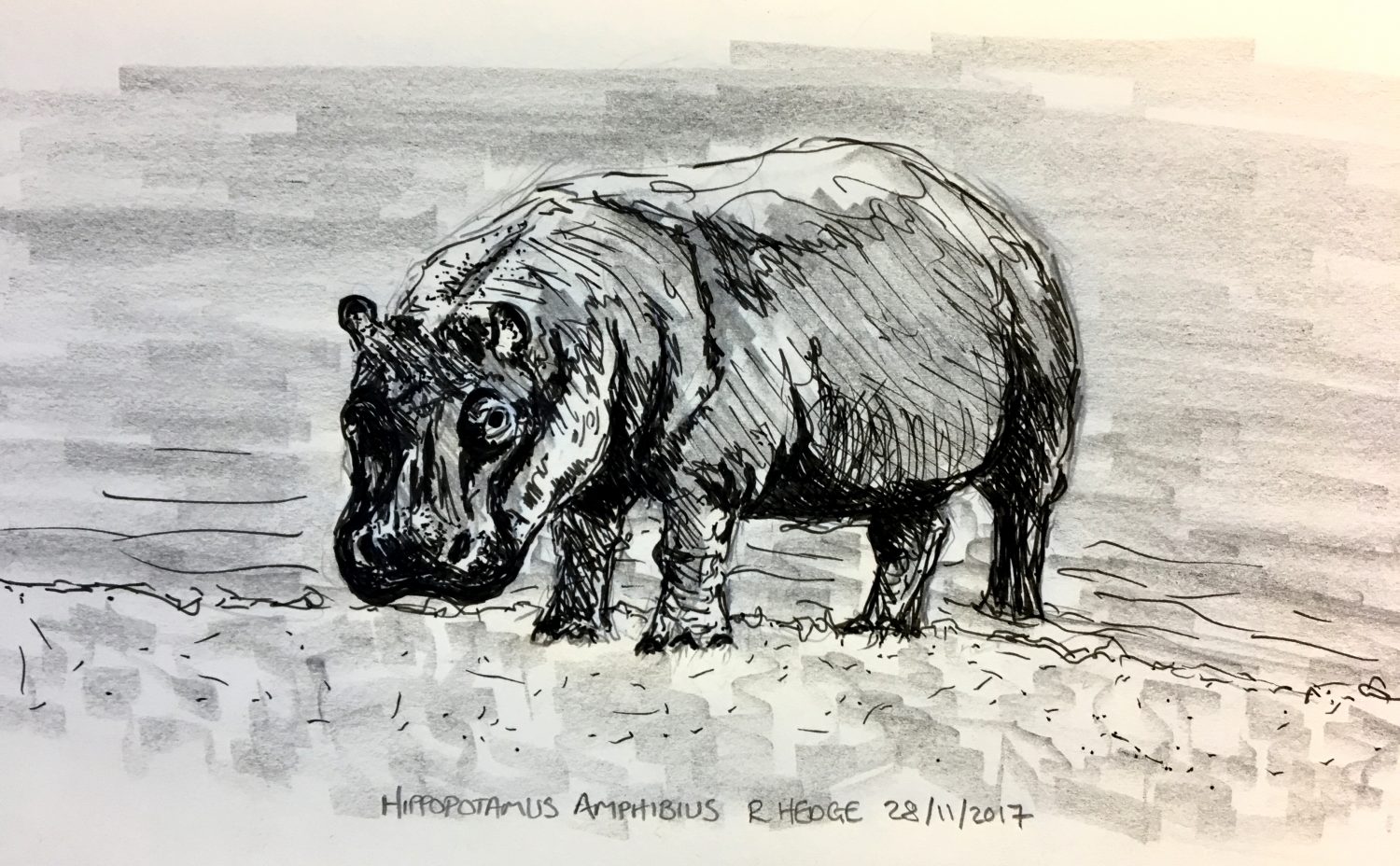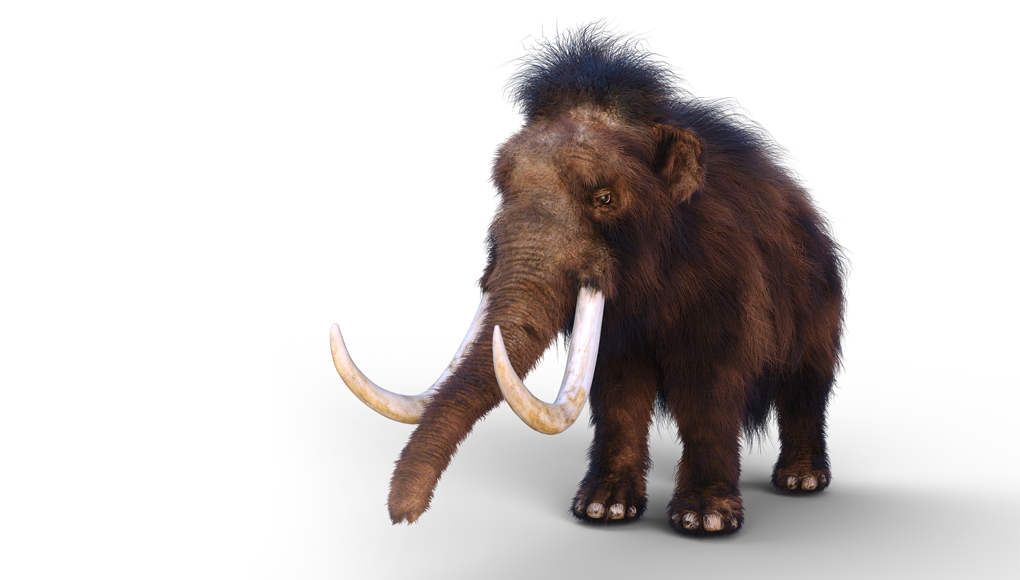Hippos & mammoths in Worcestershire?
- 30th October 2018
The Ice Age was not always cold: hippos once wallowed in Worcestershire’s warm pools. Over the last 2.5 million years – a period we call ‘The Ice Age’ and known geologically as the Quaternary – the climate fluctuated between icy glacials and warmer interglacials. As temperatures rose species were able to expand into new areas, before being pushed back further south as the climate turned icy.
During warm interglacials, herds of horses, bison and aurochs would have roamed the open grasslands of Britain. Beavers and dolphins swam in our rivers; at the height of the Hoxnian Interglacial (around 400,000 years ago) oak forests were home to deer and macaque monkeys. The gentler climate meant that early humans gradually returned to Britain and the stone tools that they left behind have been found at places like Swanscombe in Kent and Boxgrove in West Sussex.
Lions, bears, wolves and these early humans would have hunted large animals like rhinoceros and the straight tusked elephant. Straight tusked elephants are now extinct but they were once the largest Ice Age animal of all, twice as large as elephants today and even bigger than a mammoth. They could grow to four metres in height and ten tonnes in weight and their straight tusks could grow to over three metres in length.
Around 130,000 – 115,000 years ago, a particularly warm interglacial allowed tropical species to live in Britain. Hippopotamus bones have been found in Worcestershire at Eckington, Bengeworth and Stourbridge. Spotted hyenas, lions and narrow-nosed rhinoceros are also known to have lived in Britain during this time.

In comparison, glacial Worcestershire was populated by animals suited to cold, arctic conditions. With the exception of the brutally cold Anglian glaciation around 480,000 years ago – when two-thirds of Britain was under meters of ice – plants and animals were able to live and thrive here during glacial periods. Animals like the woolly rhinoceros, bison, musk ox, reindeer and the Irish elk, which had the largest antlers of any animal that ever lived (three and a half metres from tip to tip), were all residence of snowy Ice Age landscape.
However, it is the mammoth that is the best known of all Ice Age glacial animals. Early ancestral mammoths first came into Europe about three million years ago, followed by the steppe mammoth, which lived until about 400,000 years ago, and finally the woolly mammoth. These animals could grow to over three metres in height and weighed six tonnes. Their tusks could grow as long as two and a half metres and, just like a tree, would grow every year in rings. Their coats consisted of a short undercoat and overcoat of long guard hairs, perfect for the icy conditions.

Mammoth ©Pighill Reconstruction
The story of Worcestershire’s Ice Age animals is not quite as clear cut though as it first appears. Millicent mammoth, discovered in 1990 at Strensham Service along the M5, was found in with deposits containing cold-adverse mollusc species; showing Millicent lived in open grassland with a climate similar to Britain’s today. Whilst we tend to picture mammoths walking across deep snow, they could survive in more temperate climes – to a point. As the world began to warm up after the last glacial, which reached its peak around 21,00 years ago, the habitat and numbers of mammoths and other Ice Age animals dwindled. Human hunters further reduced these populations. The very last mammoths known in Northern Europe were found in 1986 at Condover in Shropshire. They died 14,000 years ago.
Post a Comment